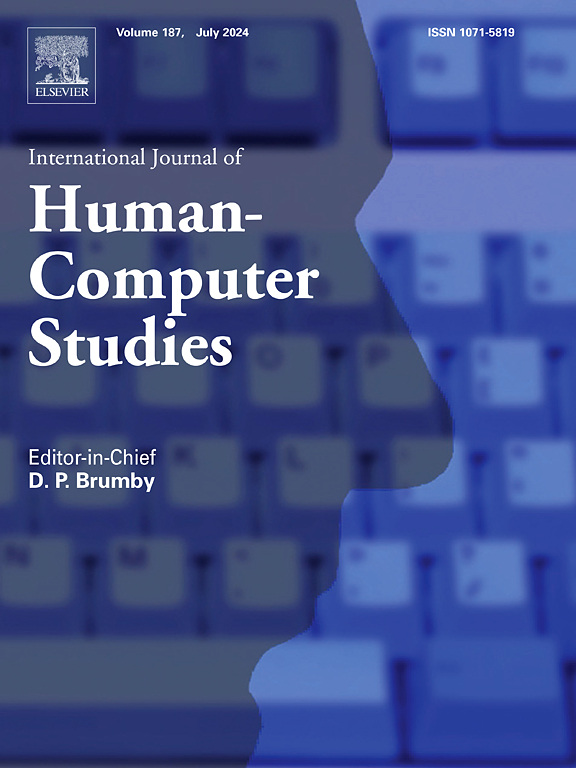Effects of AI-assisted dance skills teaching, evaluation and visual feedback on dance students' learning performance, motivation and self-efficacy
IF 5.3
2区 计算机科学
Q1 COMPUTER SCIENCE, CYBERNETICS
International Journal of Human-Computer Studies
Pub Date : 2024-11-27
DOI:10.1016/j.ijhcs.2024.103410
引用次数: 0
Abstract
Despite the importance of artificial intelligence in education, its effectiveness in this field requires more empirical research for corroborating evidence. In this study, a dance skills teaching, evaluation, and visual feedback (DSTEVF) system was developed based on AI technology and applied in a dance classroom. Forty participants from a vocational school studying dance were randomly divided into two groups: DSTEVF-based learning (experimental group, n = 19) and traditional teaching (control group, n = 21). The DSTEVF-based learning approach significantly improved students’ dance skills and self-efficacy. However, there was no significant effect on students’ motivation. Students with higher levels of motivation and self-efficacy benefitted more from DSTEVF-based learning than those with lower levels. Evidently, it is possible to establish a smart classroom by applying DSTEVF to the teaching activities of dance education, physical education, and other disciplines.
人工智能辅助舞蹈技能教学、评价和视觉反馈对舞蹈学生学习表现、学习动机和自我效能感的影响
尽管人工智能在教育中的重要性,但其在这一领域的有效性需要更多的实证研究来佐证。本研究开发了基于人工智能技术的舞蹈技能教学、评价与视觉反馈(DSTEVF)系统,并将其应用于舞蹈课堂。将40名职业学校舞蹈专业学生随机分为两组:基于dstevf的学习组(试验组,n = 19)和传统教学组(对照组,n = 21)。基于dstevf的学习方法显著提高了学生的舞蹈技巧和自我效能感。但对学生的学习动机没有显著影响。动机和自我效能感水平高的学生比低水平的学生从基于dstevf的学习中获益更多。显然,将DSTEVF应用于舞蹈教育、体育教育等学科的教学活动中,是可以建立智慧课堂的。
本文章由计算机程序翻译,如有差异,请以英文原文为准。
求助全文
约1分钟内获得全文
求助全文
来源期刊

International Journal of Human-Computer Studies
工程技术-计算机:控制论
CiteScore
11.50
自引率
5.60%
发文量
108
审稿时长
3 months
期刊介绍:
The International Journal of Human-Computer Studies publishes original research over the whole spectrum of work relevant to the theory and practice of innovative interactive systems. The journal is inherently interdisciplinary, covering research in computing, artificial intelligence, psychology, linguistics, communication, design, engineering, and social organization, which is relevant to the design, analysis, evaluation and application of innovative interactive systems. Papers at the boundaries of these disciplines are especially welcome, as it is our view that interdisciplinary approaches are needed for producing theoretical insights in this complex area and for effective deployment of innovative technologies in concrete user communities.
Research areas relevant to the journal include, but are not limited to:
• Innovative interaction techniques
• Multimodal interaction
• Speech interaction
• Graphic interaction
• Natural language interaction
• Interaction in mobile and embedded systems
• Interface design and evaluation methodologies
• Design and evaluation of innovative interactive systems
• User interface prototyping and management systems
• Ubiquitous computing
• Wearable computers
• Pervasive computing
• Affective computing
• Empirical studies of user behaviour
• Empirical studies of programming and software engineering
• Computer supported cooperative work
• Computer mediated communication
• Virtual reality
• Mixed and augmented Reality
• Intelligent user interfaces
• Presence
...
 求助内容:
求助内容: 应助结果提醒方式:
应助结果提醒方式:


